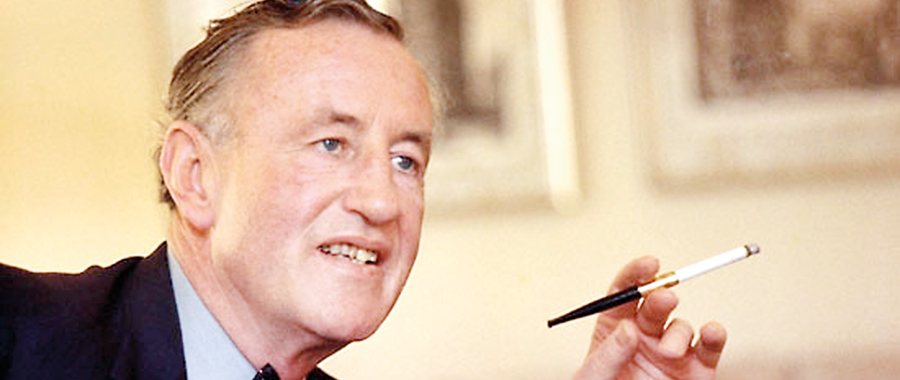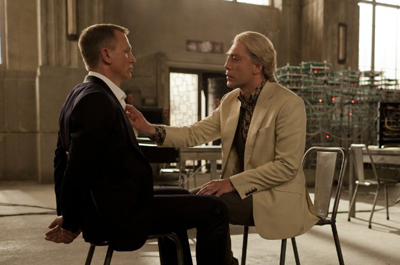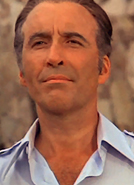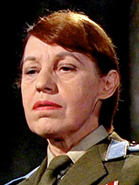Never say die – 50 years of 007
View(s):The world is not what it was when James Bond first started out. But the gentleman spy has kept up with all the radical tech and socio-cultural changes, writes Stephen Prins
Boys will be boys, have always been boys, and always will be boys. That would have been the spontaneous response among many in the audience when James Bond – boyish fantasy hero of millions of half-to-full-grown “boys” – came face to face with his latest nemesis, campy bad boy Raoul Silva, in the film “SkyFall.” The males chuckled as Raoul Silva, daintily exploring Bond’s athletic body, suggested that this was probably one “feely” experience the gentleman spy was not likely to have had. To which Bond replied, “What makes you think I haven’t?”

Ian Fleming’s Bond books are set in the Cold War years. Photo: theparisreview.com
This was a signal moment: for the first time in the 50-year Bond saga, the ladykiller spy was hinting that there might be more to him than one might have thought. Good for him. If we are to assume that the younger school-going Bond grew up like most normal healthy schoolboys, then we may expect him to have been socially curious and open to adventure, gender meditation-cum-experimentation included. We like to think of the young Bond as a sporty all-rounder.
In “SkyFall’s” surprise moment of male intimacy, the James Bond industry was giving a wink to that 10-to-15 per cent in any demographic breakdown that is known to bend gender. It was largely for the benefit of the “gay” young members of the international James Bond fan club.
Bond creator Ian Fleming bluntly said his books were written for “warm-blooded heterosexuals”, making it clear non-heterosexuals were not exactly welcome. Fleming would have liked the fey streak in Raoul Silva, the Bond saga’s 23rd villain. The writer had contrived two memorably fey villains for two of his novels – the wondrously repellent Colonel Rosa Klebb in “From Russia With Love”, from 1956, and the scary Francisco “Pistols” Scaramanga, in “The Man With The Golden Gun”, which came out in 1965.

James Bond (Daniel Craig) and Raoul Silva (Javier Bardem) in SkyFall. Photo: filmfare.com
It needs to be noted that the years of Ian Fleming’s spy thrillers were Cold War years, when every once in a while a spy scandal would erupt and make headlines. The four English spies, MI5 and MI6 operatives, who were unmasked in the ’50s and ’60s were educated intellectuals with a Cambridge background. Three of them – Kim Philby, Guy Burgess and later Anthony Blunt, who was exposed in 1979 – were revealed to be homosexual, while the fourth, the married Donald Maclean, was rumoured to be homosexual.
Ian Fleming started working on his first Bond book, “Casino Royale”, in 1951, and over the next 13 years produced 12 Bond novels and nine Bond short stories. This was the dreary grey backdrop – post-war, Cold War Europe and homosexual English spies – against which Fleming wrote his warm-blooded, richly coloured espionage fantasies. Like many educated heterosexuals of his generation, Ian Fleming, himself a very warm-blooded heterosexual, seemed to cast a cold eye on the oddball misfit, condemned to spend his/her days in the shadows of society, on the wrong side of the law. That disdain for the homosexual surfaces in the Bond books.
A piece of dialogue like the following, taken from Ian Fleming’s 1957 novel “From Russia With Love,” would be unthinkable in these politically correct times. A colleague tells Bond: “So you suggest we staff the organisation with long-haired perverts. . . . I thought we were all agreed that homosexuals were about the worst security risk there is. I can’t see the Americans handing over many atom secrets to a lot of pansies soaked in scent.”
We can’t see a contemporary novelist putting such bile-soaked sentiments in a character’s mouth. Pervert, pansy – those were the kind of derogatory monikers pasted on homosexuals once upon a less-informed time. Such words dropped out of sight when a bright new word came into usage. Actually, it was an old word given a new shine.
“Gay” in the gender sense became current at the end of the ’60s and the beginning of the ’70s. One dictionary gives 1971 as the year it became “official.” Overnight, as it were, a single word had made the world a nicer, friendlier place.
“Homosexual” has to be one of the most sinister-looking and -sounding words in the vocabulary. When you see it, you stare and register mild shock; when you say it, you do so in an undertone. To begin with, the word is organically odd, being an awkward mating of a Greek word and a Latin word – a linguistic creepy-crawly with two backs. “Homosexual” looks as pretty on the printed page as a centipede or a spider inching across a white carpet (thank you for catching that nod to the killer arthropods in “Dr. No”, book and film). It’s a word that belongs in criminal courts and prison cells, and in medical labs and clinics where they strap you down to administer shock therapy and hormone treatment.
 |
 Gender benders: Christopher Lee as Scaramanga and Lotte Lenya as Colonel Rosa Klebb. Photos: tasteofcinema.com, indiewire. |
Up till the mid-70s, the homosexual was classified under “abnormal psychology.” Britain decriminalised homosexual acts only in 1967, and the US followed only in 2003. It has to be said that the social landscape became a lot brighter when “gay” started to replace “homosexual.” Socio-cultural perceptions in the Western world had turned on a word.
In his weekly 1970s column for the American magazine Saturday Review, British novelist Anthony Burgess mourned the death of “gay” as his generation understood the term. (By the way, Burgess – Anthony, not Guy – was an Ian Fleming admirer, and chose “Goldfinger” as one of the best English language novels of 1959, in his book “99 Novels – The Best in English since 1939.”)
English writer Kingsley Amis, on the other hand, was all for the name change: “The word ‘gay’ is cheerful and hopeful, half a world away from the dismal clinical and punitive associations of ‘homosexual’.” (Amis, also an ardent Bond admirer, was the first to pick up Flem-ing’s pen after the writer’s death, aged 56, and continue the spy saga; Amis’s Bond book, “Captain Sun”, was written under the pen-name Robert Markham.)
One of the themes of this article is the powerful, independent nature of names. Names are serious business. They mark you and they can make and exalt or break and damn you.
Among the many excellent things in Ian Fleming’s books is the way the writer chooses his titles and names his characters, villains in particular. These are names like no other: Le Chiffre, Dr. Julius No, Auric Goldfinger, Sir Hugo Drax, Serrafimo Spang, Ernst Stavro Blofeld. Names to quicken your pulse. Fleming must be the only writer since Dickens to have thought long and hard about how to label his characters. His women are equally memorably named. Think of Vesper Lynd and Solitaire, Tiffany Case and Honey Ryder, Vivienne Michel and Mary Goodnight. (In contrast, Fleming chose “James Bond” for the name’s blandness, blankness, dullness. He wanted Bond to be faceless, expressionless. The name was taken from the author of a book on the birds of Jamaica.)
To mark 007’s golden anniversary (our spy was “born” in ’52), the International Spy Museum in Washington DC is honouring the bad guys and gals of the Bond books and films in an exhibition titled “Exquisitely Evil: 50 Years of Bond Villains.” There’s no denying the toxic potency of names like Dr. No and Goldfinger. They stand out, stand tall. Note that the two books were named after their villains, not their hero.
If we have one grumble about “SkyFall”, it is the mediocre naming of the villain: there must a thousand thousand boringly named Raoul Silvas out there in the real world. You’ll never bump into a Dr. No or a Goldfinger in public, at a beach party or a golf tournament. For that lapse, the three “SkyFall” scriptwriters deserve a rapping with a carpet-beater.
We were in Form One, in the early ’60s, when the James Bond books started to make their way into the classroom. The paperbacks, pinched from fathers and older brothers, or passed on by over-affectionate Form Six prefects, had a heady muskiness, a thick male-female reek. Unlike the chaste “Saint” books of Leslie Charteris, these spy stories contained the forbidden vital adult ingredient of sex, which made them essential reading for precocious pubescent brat-teens. By January 1963, our Form One year, 10 of the 14 James Bond books were circulating, steadily and stealthily. The books took us into a world where curtains were drawn, lights dimmed, and men, women and villains so tightly squeezed together that the reader could barely breathe.
We were 11 years old when we took our first Bond, “Casino Royale”, home to read. On our first sighting of “brothel”, we looked up to ask Father what the word meant. Without missing a beat, Father replied, “Ah, that’s a rather special kind of hotel” and left it at that. To his credit, Father neither wanted to know what we were reading, nor where we had found the book. All he said, as he headed to the veranda, was: “You young people pick up extraordinary reading matter for your age.” After that we were careful about toting and flashing Mr. Bond.
In our class there was a privileged, not exactly spoiled, only child from an upper-set Cinnamon Gardens background. He was expensively dressed and shod, his white shirts and shorts silken and spotless. Our colleague, let us codename him QSF, would bring to class thrillers and forbidden books from his father’s eclectic library. These ranged from Sax Rohmer’s Fu Manchu, Leslie Charteris’ Saint, and Ian Fleming’s James Bond to Havelock Ellis’s “Studies in the Psychology of Sex.” The Bond books were exciting entry points into the hidden world of adults.
One day QSF produced a classy little silver object that fitted in the palm of his hand. It was a Minolta 16 II miniature spy camera, a gift from his father. The sleek aluminium gadget was the kind used by Bond and real spies to photograph top-secret documents. QSF would take “secret shots” of classmates who were not aware that he was carrying a camera. From then on, QSF was the “guy with the spy gadget”, a Schoolboy Bond.
When we reached Form Three, it was 1965, the year of the one but last Bond book. QSF brought to class his father’s copy of “The Man With The Golden Gun” and announced the curious “fact” that the book’s villain was homosexual and “that he could not whistle.” The inability to whistle, according to the book, was a symptom of inversion. (Fleming was an eager collector of curious bits and pieces of information, authenticated or not, realistic or ludicrous, which he would stir into his books.)
QSF, who had a silken bullying way, went around the classroom challenging us to demonstrate our whistling skills. Some produced strong shrill sounds, others faltered. Our own attempt was a hollow copy of a whistle. At least 10 of us were made to feel the shame of failing the Scaramanga Siffleur (Whistler) Test.
When we stepped out of the cinema after “SkyFall”, we were thinking mostly about the deliciously wicked Raoul Silva, while another part of our mind was playing the soundtrack. Like many of the Bond theme songs, this one too was irritating and it refused to shut off. To spit it out of our system, we tried whistling it. Drax, that didn’t work.
Half a century on and we had again failed the Scaramanga Whistling Test.
Follow @timesonlinelk
comments powered by Disqus

















